Biographies
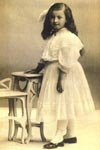

Jenny Bachenheimer née Katz(1902-1997)
Jenny Bachenheimer, née Katz, was born in 1902 in Alheim-Heinebach, the daughter of Baruch Katz and Sara Nussbaum Katz. Jenny grew up in an Orthodox home; her father was “parnas”, or lay leader, of the Heinebach synagogue for 30 years. In fact, part of their house on Kirchstrasse had been used as the community’s synagogue in the early 1800’s. In 1928, she married Siegfried Bachenheimer of Rauischholzhausen, whose mother Betti Rosenbaum was from Baumbach. The couple lived in Kirchhain, and their daughter Brunhilde was born in 1929. Due to the Nazi boycott in 1933, Jenny and her husband and daughter moved back to her parents’ home in Heinebach, where they were the target of frequent attacks by local Nazis and Hitler Youth members. Baruch Katz’s brothers and sisters had moved to the U.S. many years earlier, and they helped their family in Heinebach and Baumbach flee to America in 1934. In New York, the family founded the first congregation of German Jews to arrive in the U.S. after Hitler’s rise to power. Jenny worked as a seamstress and was widely beloved in her community for her good works. She was a major force in the lives of her two grandchildren, and lived to see two great-grandchildren as well before her death in 1998 at age 95.
Fuller biography in preparation.

Moses Moritz Berlein (1818-1898)
Moses Moritz Berlein came from Marburg on the Lahn. When he became licensed to practice as an attorney in Rotenburg in 1843, he was among the very first Jewish lawyers in German-speaking countries. In 1848, however, he was one of the targets of the riots of that year against the Rotenburg Jews. In 1862 he was involved in the re-establishment of the Rotenburg gymnastics club. In 1899 his son Julius, who had meanwhile settled in London, made a donation of 3,000 Marks in order to set up a municipal archive in Rotenburg.
A longer version of this capsule biography is also available in English (translation by Prof. Judith Levi, Chicago).
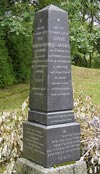

Moses Brandes (1836-1910)
Moses Brandes was born and grew up in Rotenburg on the Fulda. After studying at the Jewish Teachers’ Seminary in Kassel, he taught the Jewish children in Oberaula from 1879on. An obelisk marks his burial place in the Jewish cemetery in Oberaula. The biography on Moses Brandes that follows is based on the portrayal by his daughter Johanna Harris-Brandes in "A Happy Childhood in the Village, Experiences of the Years 1880-1890,” published in Monika Richarz’ book Citizens on Probation: Memories of The Lives of German Jews 1780-1945. The memories of his daughter, written in the USA, convey a graphic notion of the lives of ordinary rural Jews, the difficult position of the Jewish village teacher and the rural forms of anti-Semitism in the German state of Hesse.
The second part of Harris-Brandes’ chapter deals with the descendants of Moses’ brother Hirsch in Rotenburg on the Fulda, where they had a specialized textile shop up to the end of 1938. Two members of the family (Gretel Brandes Goldschmidt and her daughter Margit) became victims of the Shoah.
A longer version of this capsule biography is also available in English (translation by Prof. Judith Levi, Chicago).
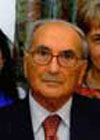
Manfred Braunschweiger (1919-
He was born in Burghaun in 1919 and grew up in his native town. He attended the grammar school (die Lateinschule, (academic-oriented secondary school) in Huenfeld. After he was interned in Buchenwald just days after 9 November 1938, his mother sold all her property in order to buy him and his brother tickets to Shanghai – which won their release from internment and thus escape from Nazi Germany. During his turbulent years as a refugee in Shanghai (1939-1946), Manfred eventually found work in the food-supply sector. This stood him in good stead when he established an import-export company in America.
A longer version of this capsule biography is also available in English (translation by Rev. Martin Siebert).
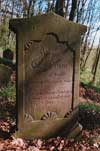
Carl Dellevie (1811-1847)
Carl Dellevie was born and grew up in Rotenburg on the Fulda. His grandfather was the local Court Jew Meyer Heinemann who, in 1808, took the surname Dellevie. Carl attended the Hersfeld Gymnasium (academic-oriented secondary school) where, in 1831, he passed his Abitur (university-qualifying) exams. He received his medical degree (M.D.) at Marburg University in 1935. Until his early death in 1847 he was a general practitioner and obstetrician in Hersfeld, where he was also the school doctor for the Gymnasium students. His practice was in the house at 4 Linggplatz. His tombstone can be found in the Jewish cemetery in Rotenburg on the Fulda where his family had lived for generations.
A longer version of this capsule biography is also available in English (translation by Prof. Judith Levi, Chicago).

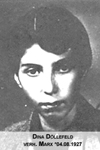
Theodor Doellefeld (1895–1974)
Theodor Doellefeld was born and grew up in Rotenburg where he worked as a grain and animal feed merchant. In May 1930 he was appointed parnass [chief administrator] of the Rotenburg Jewish congregation. Deported to Riga in 1941 and used as a slave laborer on local farms, he managed to escape his concentration camp when the German eastern front collapsed in 1943/44. However, he was seized by the Soviet Russians, and sent to a Siberian labor camp until his release in 1958. In February 1959 he left Germany and went to Louisville, Kentucky (USA) where his daughter Kate had been living since 1938. Just a few weeks before his arrival in the USA his daughter Dina (born 1927) died; her early death was due to the lasting destructive effects of what she suffered in concentration camps. After returning from the concentration camp in 1945, she had unsuccessfully tried to settle in her Hesse home region; she had then moved to Chicago, Illinois (USA) in 1946. Theodor died in July 1974 on his way to a recreation visit to Baden-Baden in south-western Germany.
Isidor Fackenheim (1847–1934)
In the mid-19th century the Fackenheims had moved from nearby Lispenhausen to Bebra where, in 1869, they set up a kosher restaurant to which, over the years, they added a party hall and hotel facilities. Beyond his business activities, Isidor was fully integrated into local civic life, e.g. as a member of the local parliament. Over a long period he was secretary of the innkeepers’ association, which made him an honorary member after his retirement. It was in his hall that the Rotenburg county innkeepers’ association used to hold its annual meetings. His wife Rosa, née Dessauer, was awarded the Red Cross medal of merit for her contributions to the National Women’s Association. Lengthy space has been given in the following material (click on "more") to the recollections which the Fackenheims' granddaughter Ilse Abraham Friedman wrote in the USA in 1984.
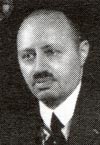
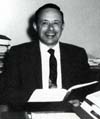
Willy Fackenheim, MD (1882-1943)
Willy Fackenheim was born and raised in Bebra, the son of the local innkeeper Isidor Fackenheim. After studying medicine in Wuerzburg, Willy received his license as a general practitioner in Wiesbaden in 1920 – but it was revoked by the Nazis in 1936 "on racial grounds." After the November 1938 pogrom, he was subjected to a terrible time in the Buchenwald concentration camp, about which his son Walter, who was also interned there, later published a shattering account. In 1939 the family managed to escape to Shanghai, where Willy was even able to practice his profession for a short time. However, due to his extremely adverse life circumstances, this opportunity did not last long: Willy died in Shanghai in 1943, as did his wife in 1945. The biographical material that follows is based substantially on the memoir of Willy's son Walter (Frank), People, Events, Stories: A Personal History 1920-1947 (published in San Francisco, 1984).

Baruch Floersheim (1813-1881)
A merchant in Rotenburg who sold manufactured goods and millinery, Baruch Floersheim was the most severely harmed victim of the 1848 riots against the Rotenburg Jews; due to the rioters' brutal vandalism, he suffered property damage amounting to 1,000 Taler. He saved his life only by fleeing to the state capital of Kassel, where he filed a detailed report about the riots in Rotenburg, according to which there had been plenty of "honorable" citizens as wrongdoers. Despite all these events, Baruch returned to Rotenburg and continued to run his business there until he retired in 1876. In September 1881, he was run over by a train and died of his injuries. His tombstone still stands in the Jewish Cemetery in Rotenburg.
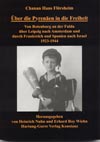
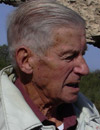
Chanan/Hans Floersheim (1923-
Hans Floersheim was born in Rotenburg in 1923 and grew up there, but moved to Leipzig with his family in the spring of 1933. From there his parents sent him to Amsterdam where he went underground after the German occupation of the Netherlands in 1940. Thanks to good luck, his own audacity, and his quick-wittedness, he succeeded in escaping across the Pyrenees into Spain in April 1944 - on his fourth attempt. In October 1944 he made it to Palestine from Cadiz, Spain. After living several years on Kibbutz Hazorea (near Haifa), he moved to Kibbutz Yakum in 1947 where he has lived ever since. His report about his flight through western Europe was published in 2008 (in German) under the title, Across the Pyrenees to Freedom: From Rotenburg on the Fulda via Leipzig to Amsterdam and through France and Spain to Israel 1923-1944, with an introduction by Brigitte Meyer-Christ and Heinrich Nuhn. The book is presented here in a PDF-version. It attests to the courage of one individual while at the same time bearing witness to the role of reciprocal support and help from outsiders. Documents within the reading text and in the appendix show the deep roots of his family in their Heimat (home region) in the northern and eastern parts of Hesse.

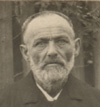
Louis Goldschmidt (1867-1940)
Like his forefathers, Louis Goldschmidt was a horse trader in Bebra. On August 8, 1935 [during the Nazi era] he was observed conducting business with a farmer during Sunday church services – and then denounced to Nazi stormtroopers. Thereupon, both of them were paraded through the streets of the town in a raucous torchlight procession, intended as a deterrent to any Christians continuing to trade with Jews. Since there was no legal justification for such an action, the local press - especially the Nazi propaganda tabloid, Der Stürmer, reported and interpreted it as a spontaneous outburst of so-called “healthy popular sentiment.” Via videoclips two contemporary eyewitnesses comment on the event.
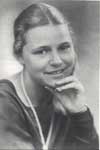

Ruth Guetzlaff-Katzenstein (1906–1988)
Born and brought up in Rotenburg, Ruth Guetzlaff-Katzenstein owed her survival in the Nazi period to the rescue operation of her non-Jewish mother who, in 1941, denied that her Jewish husband Siegfried Katzenstein was Ruth's biological father, and thus helped Ruth to secure an officially certified “Aryan” identity. Through a judicial decision Ruth was freed from the obligation to wear the discriminatory Star of David that was mandatory for Jews, and in this way escaped deportation to an extermination camp. Ruth’s Star of David is now displayed in a showcase in the Jewish Museum in the former mikvah in Rotenburg. It was for this reason that Ruth’s daughter Kathrin Reiher chose the title “Abschied vom Stern” (“Farewell to the Star”) for her account of her family's history, published in 2009 in the book, To Survive is to Remember: Life Stories of German Jews," edited by Wolfgang Herzberg.
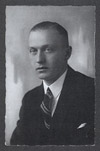
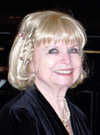
Dr. Arthur Hahn (1899–1973) and daughter Hannelore Hahn (1926- )
Arthur Hahn was born March 4, 1899 as son of the Hersfeld private banker Jakob Hahn. In August 1917, as student of the final class of the local Gymnasium (= academic high school) he volunteered for the German Army in World War I from which he did not return until August 1920. His experience as prisoner of war was the basis for his Juris Doctor (J.D.) degree in law which he received at the University of Wuerzburg in 1923. In Hersfeld Arthur took an active role as treasurer of the local “Reichsbanner Schwarz-Rot-Gold” (=organisation which actively supported republican and democratic political structures). He also held the position of deputy President of the Hesse “Reichsbund juedischer Frontsoldaten (=organisation of former Jewish German soldiers). In 1925 he married into the Brach family and became the manager of the family’s big malt factory in Schoena near Dresden of which his father-in-law had set up a branch in Paterson, New Jersey. This enabled Arthur and his family to emigrate in September 1938. Arthur’s daughter Hannelore, born 1926, is the translator of the scientific writings of Albert Einstein which she was commissioned to do by the American Institute of Physics for its Moments of Discovery project. A number of Hannelore’s poems and essays were published in the New York Times. In 1976 she founded the International Women’s Writing Guild whose president and manager she has been ever since. Her first work, Take a Giant Step, was a book for children about the history of stilts. For us, Hannelore Hahn’s memoir On the Way to Feed the Swans was an important source for the biographies on her father Arthur Hahn and herself that follow.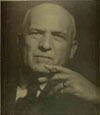
Jakob Hahn, banker (1871-1943)
In the 1890s Jakob Hahn migrated from Rhina to Bad Hersfeld, where he set up a private bank which functioned until 1938. The biography that follows on Jakob Hahn includes material on the lives and the activities of his sons Isfried, Arthur, and Rudi plus their families. Arthur received his Juris Doctor (J.D.) degree in law at the University of Wuerzburg. In 1925 he married into the Brach family, and became the manager of the family's big malt factory in Schoena near Dresden. Arthur Hahn’s daughter Hannelore is the president of the International Women’s Writing Guild (IWWG); her 1982 memoir, On the Way to Feed the Swans, was an important source for the Jakob Hahn biography that follows.

Jakob Jack Hahn (1920–
Born in Bad Hersfeld in 1920, Jakob Jack Hahn had to leave the local grammar school for so-called "racial" reasons in April 1935. Through an arrangement with a Rabbi Schonfeld of London, he made it to England in March 1939 by claiming to be a rabbinical student. After temporary internment in England, he emigrated to Canada where he studied mechanical engineering, ending up as an important industrialist in the field of manufacturing plant construction.
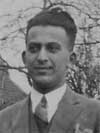
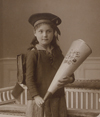
Dr. Josef Hahn (1909–1972)
Born in Bad Hersfeld, Josef Hahn passed his Abitur (university-qualifying) exams when he graduated from the local Gymnasium (academic-oriented secondary school, which in Bad Hersfeld was also known as die Alte Klosterschule, the "Old Monastery School"). At the University of Marburg he studied law and received his Juris Doctor (J.D.) degree there. After losing his position as a civil servant in 1933 on account of his Jewish descent, he emigrated to England to become eligible for a job in (and legal entry to) British Palestine. Thanks to his legal training, he became an Israeli civil servant in 1961, at which time he changed his surname to Haon (lit., "the power"). As financial attaché at the Israeli embassy in Bonn, he was mainly in charge of restitution claims concerning stolen Jewish property in Germany. The biography that follows includes information and documents about his wife Vera, née Klebe, who also came from Bad Hersfeld and who lives now in Jerusalem.
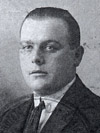

Rudi Hahn (1901-1976)
Rudi Hahn, the son of the Hersfeld banker Jakob Hahn, left the Hersfeld Gymnasium (academic high school) in 1916 to begin an apprenticeship as a bank salesman in his father's bank business in Hersfeld. After that, he earned his first professional spurs at the Hessian Bank Association in Kassel, and then returned to work in the family business in Hersfeld until 1930. There he was involved in the tradition-rich Gymnastics Club of Hersfeld, as well as with the volunteer firemen. The marriage of his brother Arthur to the daughter of the malt factory owner Leonard Brach in Dresden in 1930 bestowed on Rudi a new range of professional duties as coworker in Brach's Elbschloss malt factory in Schöna in "Saxon Switzerland" (a mountainous area near Dresden). On February 8, 1938, he was arrested in Dresden and imprisoned for three months on alleged foreign currency offenses. That was the final warning sign, which expedited his leaving Germany. His first foreign stop in September 1938 was Prague; from there his path, together with his wife Lissy, took him through Holland and Belgium to London in July 1939. After the start of the German offensive in May 1940, an England seized with invasion anxiety and fear of spies declared all the Germans who had fled to England to be enemy aliens and installed them temporarily in internment camps – including Rudi Hahn. In the following years he worked as a barber, before he began a shirt-manufacturing business in 1950. Despite a heart problem, he worked actively until an advanced age, his last business being men's outerwear. In September 2006, Rudi's children Michael and Vivien (and their spouses) accepted an invitation to the dedication of the Jewish Museum created at the site of the former mikwe (Jewish ritual bath) in Rotenburg an der Fulda. Their visit also included a number of meetings with schoolchildren in Bad Hersfeld.
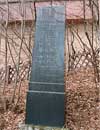
Herz Hess (1819-1892)
In the county of Rotenburg on the Fulda, Herz Hess served in his time as regional community president (parnass) for the county's Jewish congregations, and was also one of its citizens who paid the highest taxes. From 1873 until his death in 1892, he served a member of the Rotenburg town council. He owned the estate of Wuestefeld and the barracks in the Buergerstrasse. He also acquired the mill named Herrenmuehle [Nobleman's Mill], which had previously belonged to the Landgrave of Hesse-Kassel. His sons transformed this ancient mill near the Fulda bridge into one of the most efficient enterprises of its kind, until it burned down in 1923.
A longer version of this capsule biography is also available in English (translation by Prof. Judith Levi, Chicago).
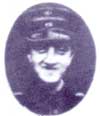
Nathan Hoeflich (1894-1942)
He was the last member in a long ancestral line which can be found in the small town of Rengshausen (now part of Knuellwald Township). The Hoeflich biographies are woven into Eckhard Preuschhof's history of the small Jewish community of Rengshausen, which began in the 17th century and ended when the Hoeflich family fled their home after Reichspogromnacht to try to find safety in the provincial capital of Kassel. But the family was deported to the Lublin district in eastern Poland in June 1942, where their traces disappear.
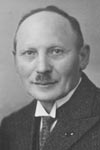
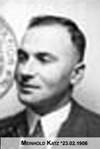
Jakob Katz Rotenburg (1878-1942)
Master shoemaker Jakob Katz ran a shoe repair shop together with a retail shoe at 4 Steinweg in Rotenburg on the Fulda; he was the sole representative for Salamander shoes for over 20 years, a role which was cancelled by the Salamander firm in 1933 on account of “racial” reasons. Together with the telecommunications technician Jakob Koepping, Jakob Katz developed a "manual nailing appliance for shoemakers" for the purpose of attaching shoe soles, which was patented in 1913. The appliance is being replicated by the Occupational Training Institute of Kassel in cooperation with the Department of Mechanical Engineering of the University of Kassel and is going to be exhibited in the Jewish Museum in the former mikwe (Jewish ritual bath) of Rotenburg. One additional indication of Jakob Katz' integration into his Rotenburg environment: in 1910 he was one of the founding members of the local goat-breeding club. Although his son Meinhold (born 1906) managed to escape to British Palestine from Glauchen (in Saxony), Jakob Katz as well as his wife Berta, née Neuhaus, and his daughter Frieda perished in the Shoah.
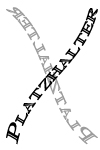
Julius Katz (1911-1983)
Julius Katz was the president of the Jewish community in Sontra. After his release from the Buchenwald concentration camp in December 1938 Julius Katz entered the Jewish occupational retraining site of Gehringshof in the Rhone for Hachsharah ("preparation" in Hebrew, a term used to designate agricultural and occupational training sites for young Jews hoping to settle in British Palestine), in order to obtain the agricultural training that would qualify him to receive an entry permit to British Palestine. He reached Palestine in February 1940, but by means of an adventuresome route and without the permission of the British mandatory government, so that he had to spend the first few months in an internment camp. His father Hermann Katz had died in Sontra in 1937, and his mother Sara and his sister Frieda were victims of the Holocaust. For health reasons, Julius Katz spent his last years in Frankfurt am Main, where in May 1982, Dr. Ulrich Schneider conducted a lengthy interview with him in the context of the latter's research on the Buchenwald concentration camp; during the interview, important details were discussed concerning the course of events during the November Pogrom of 1938 in Sontra.Additional biographical material is in preparation

Manfred Katz, Beisefoerth
Manfred Katz was the son of the horse trader Salli Katz and his wife Betty (née Rosenblatt) in Beisefoerth near Melsungen. Immediately after the November 1938 pogrom, the family fled from their hometown of Beisefoerth to Kassel. In December 1941 Manfred Katz, together with his younger sister Doris (Dorette), was deported to the Riga ghetto. Although his parents and this sister perished in the Holocaust, he survived his imprisonment in several concentration camps. In July 1945 he reached Frankfurt am Main. His older sister Ilse Johanna, who had been able to flee to the USA in 1940, managed to get him a US visa in May 1946. After completing his studies in engineering, Manfred Katz became a leader in the area of developing computerized elements of the transportation industry. [The material for the longer biography of Julius Katz which is in preparation was made available to us by Manfred Eifert.]

Willy William Katz, Diemerode/Kassel (1895-1988)
Willy William Katz was born in the little north-Hessian village of Diemerode (today, a part of the town of Sontra) in 1895, where he enjoyed an untroubled childhood. He served as a volunteer soldier in World War I. After studying at the Jewish Teacher's Seminary in Kassel, he worked as a teacher in Jewish schools in Beckum (Westphalia), Moenchengladbach, and Kassel; he also served as the cantor in the main synagogue of Kassel starting in 1929. In November 1938 he was transported to the Buchenwald concentration camp near Weimar. Only the Cross of Honor for Frontline Soldiers, which he (like many other Jews of his generation) had received for his earlier wartime service, spared him from the worst. In 1939, at the last minute, he and his wife were able to find refuge in Australia, where he served the Jewish community of Sydney as teacher and rabbi. In 1966 he published And the Ark Rested, the history of his synagogue congregation together with a short autobiography. On January 1, 1975 Katz was honored by Queen Elizabeth II who made him a Member of the Most Excellent Order of the British Empire (the MBE award) for his merits in public service.
Longer biography in preparation (by Rev. Rolf Hocke, Waldkappel).
Additional biographical material is in preparation
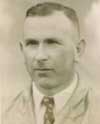

Willy Katz (1898-1988)
Willi Katz belonged to a family which had lived in the small town of Nentershausen for many generations. As late as October 31, 1935, he – like many German Jewish veterans – was awarded the Cross of Honor for Frontline Soldiers for his service in World War I, by the “Fuehrer and Chancellor of the Empire," i.e. Adolf Hitler. But in November 1938, during the "Kristallnacht" pogroms, he was severely beaten by Nentershausen storm troopers, and his living quarters and business premises were vandalized and plundered. In October 1940 Willi, his wife Martha, and his three sons escaped to Ecuador where he managed to continue his work as a shoemaker specializing in orthopedic footware. Later on, his eldest son Siegbert (Bert) worked as an employee for the Massachusetts Institute of Technology (MIT) in Boston where he was involved in the Apollo space program. Willi’s son Karl (Carlos), who has lived in New Jersey after leaving Ecuador in the 1950s, has been a highly qualified and successful electrical engineer who holds a number of patents on power cables. Willi’s son Manfred (now deceased) ran the popular restaurant Schwender’s in Hamburg.
A longer version of this capsule biography is also available in English (translation by Willy's son, Carlos Katz).
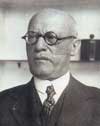
Prof. Dr. Moritz Katzenstein (1872–1932)
PProfessor Moritz Katzenstein was born and spent his youth in Rotenburg on the Fulda. He became a professor of medicine in Berlin where, at the municipal hospital in Friedrichshain, he worked for many years as head of the department of surgery. In 1901 he was the first German surgeon to repair a patient’s torn meniscus. In Katzenstein's long 1932 obituary, Albert Einstein called Moritz Katzenstein his best friend during his Berlin years: “I have to thank my good fortune that I was privileged to be the friend of this kind-hearted, indefatigable, and highly creative man.” A replica of Katzenstein's death mask is exhibited in the Jewish Museum in the former Rotenburg mikvah. In 2010 the street leading to the entrance of the Jewish cemetery in Rotenburg was given the name Moritz-Katzenstein-Straße.
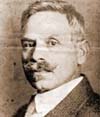
Sally Katzenstein (1865-1942)
Sally Katzenstein was born in the Hessian village of Heinebach, near Rotenburg on the Fulda. In 1889 he relocated to the island of Sylt to pursue his painting; he became a much honoured and esteemed artist and town councillor, and thus a figure in Sylt's civic life. He converted to Christianity in early 1908. His career as a painter began at the Duesseldorf Academy of Art as a student of Professor Eugen Duecker’s. The sea and costal landscapes were his most important motifs. He first signed his paintings as Sally Katzenstein, and later as Franz Korwan, the name he adopted officially in 1924. In October 1940 he was deported from Baden-Baden to the internment camp at Gurs near the Pyrenees; he perished two years later in the Noé internment camp. In 1991 the artist’s work was shown in a solo exhibit in the Jewish Museum in Rendsburg (Dr.-Bamberger-Haus), and also in Keitum on the island of Sylt in 2002.
There is also an English version of this biography (translation by Prof. Judith Levi, Chicago).
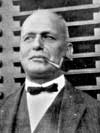
Siegfried Katzenstein (1875-1935)
One of twelve children, Siegfried Katzenstein was born in 1875, a few years after his merchant father Salomon moved the family from nearby Heinebach to Rotenburg, where he ran a large-scale recycling business. At the age of 30, he married Wilhelmine (Wyla) Grimmer, a Christian woman from Erfurt, with whom he had three children: Ruth, Rolf, and Ester. As a candidate of the Liberal Party, he was elected to the Rotenburg town parliament in 1919, and to the town council in 1924; he held the latter post until 1927, when he ran into problems with his business. Barely two months after the Nazi takeover in 1933, Siegfried was severely assaulted by anti-Jewish rioters. As his oldest daughter Ruth recalled, “They dragged Father out, threw him on the manure pile, and almost beat him to death!” She then made sure that her parents left Rotenburg that same year, to live with her in Berlin. Once there, however, Siegfried was unable to make a new start; after several years of depression and despair, he committed suicide in October 1936.
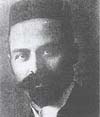 © Otto Abbes
© Otto AbbesIsidor Landsberg (1881-1923)
Isidor Landsberg was the teacher at the Jewish elementary school in Hersfeld from 1921 until his premature death in 1923. He died of the lingering effects of wounds that he had suffered while serving as a medic in World War I. After being expelled from the Hersfeld secondary school (the "Alte Klosterschule") in 1934 for being "non-Aryan," Isidor's twin sons Simon and Jakob (born 1922) were able to study for a time at the strictly Orthodox Talmud-Torah School in Frankfurt, beginning in 1936; soon after, Isidor's widow and other children moved to Frankfurt as well. Isidor's daughter Karla and four of his five sons survived the Holocaust by emigrating to Palestine. However, his widow Rini (née von der Walde) and his son Jakob perished in the Holocaust; the latter was shot by German soldiers in Yugoslavia.
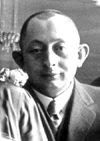

Leopold Levi (1897-1943)
Leopold Levi studied at the tradition-laden Bad Hersfelder Gymnasium (academic secondary school), passed his Abitur (university-qualifying) examinations there in 1915, and went on to study art history in Heidelberg. Unable to find any permanent employment in this field, he joined the family merchandising business in Nürnberger Street in Bebra, which his father Benjamin Wolf had founded in the 1890s and which he continued to lead successfully into the 1930s. However, the Levi house and store was one of the main targets during the pogrom riots in November 1938, which began in Bebra already on the night of November 7/8. Soon thereafter, Leopold Levi was interned in Buchenwald ; once released, he and his wife fled to a cousin's house in Mannheim, where they waited in the hope of obtaining a US immigration visa. However, they were both seized and deported from Mannheim on October 20, 1940 - first to the internment camp Gurs in southwestern France, then to the internment camp of Drancy near Paris, and finally to Auschwitz where they perished.
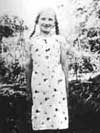
Marga Levi (1927-1943)
Marga Levi was born in Gemuenden on the Wohra near Marburg but, after her parents’ divorced, grew up with her grandparents in Niederaula. On November 8, 1938, in mortal terror as the perpetrators of the pogrom against the local Jews were pursuing her, she leapt out of the window of her grandparents' inn, suffering severe injuries. She was then just eleven years old. Her traces lead to the Rigo ghetto in 1943, when she was sixteen, but disappear thereafter. The story of her life and fate is here presented as an illustrated radio play, based on the fictitious diary written about her by Daniela Eckstein, who had written the text when she was a pupil in Niederaula.
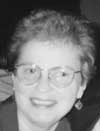
Ilse Linz-Wischnia (1927-
Ilse Linz was born in Rotenburg on the Fulda in 1927. Her father Hermann Linz II had married Lieschen, daughter of Rotenburg's Jewish teacher Baruch Rosenstein (whose family was from Niedenstein) and Bettie (née Mueller, from Herleshausen). Ilse’s grandfather Meier Linz ran a shop on Rotenburg Steinweg street, where he sold textiles, manufactured goods, and furniture; the shop had been founded by her great-grandfather Feist Linz. Due to the dangers and persecution her family experienced in the first few years of Nazi rule, they left Rotenburg for Frankfurt in 1936, where Ilse was enrolled in the renowned Jewish school, the Philanthropin. Then, in June 1939, her family was able to send her out of Nazi Germany to England on a Kindertransport. After some time in a tyrannically run boarding school in London followed by some months in an immensely superior one in Folkstone, she was fortunate enough to be able to travel to the USA in February 1940; there she was reunited with her parents and brother, who had also just escaped Nazi Germany and settled in Chicago. In our project Ilse, now a resident of Connecticut and Florida, tells the story of her life and the lives of her ancestors in the form of a long letter to her granddaughters Elizabeth and Stephanie O’Connell as well as Abigail and Beth Wischnia.
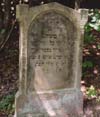
Markus Linz (1800-1884)
He is the focus of the legendary tale “Der Markusdeech” (The Markus Pond), told in the local dialect. This tale served for generations to mischaracterize the extensive attacks made by Rotenburg citizens on the Jewish part of the population as if there had been rioting of the rural population from the neighbouring villages. In Rotenburg the notion of the breakthrough into liberty, which is generally connected with the year 1848, was not directed against royal authorities and the landed gentry, as was true elsewhere, but instead degenerated into violent attacks on the town's Jewish minority. It took heavy military intervention to stop the attacks which continued from March to June 1848. Our Rotenburg 1848 project of which the Markus Linz section is taken [cf. “THEMES” on our website] makes use of various archival documents and includes videos and tape recordings.
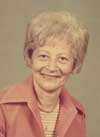
Sophie Linz-Rosenfeld (1916-2006)
She was born and grew up in Rotenburg. In late 1939, at the age of 23, she fled to England where she received an education as a qualified nurse. After World War II she emigrated to Long Beach, California, in the USA. Via tape recording Sophie presents the story of her mother’s family in Frielendorf, her own life and those of her family in Rotenburg where they ran a modern coffee roasting shop on Breitenstrasse up until the pogroms in November 1938 (Reichspogromnacht). Sophie’s parents Hermann Linz I and his wife Fanny née Plaut became victims of the Holocaust. Her brother Erwin/Joseph made it to Palestine where he chose the surname Ilan. His son Uri Ilan is now the only descendant of the Hermann Linz I family.
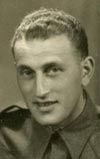
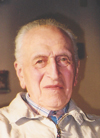
Hans Lowenberg (1914-2004)
About a year after the night in March 1933 when several local Jews were beaten up and his family's business subject to an arson attack in their hometown of Schenklengsfeld – where his ancestors had lived for generations - Hans Loewenberg himself was dragged from his motorcycle and violently attacked by Nazi activists. Although he managed to put up an effective defense, his parents shipped him off to an uncle in Prague out of fear for his ultimate safety. To satisfy his wish to emigrate to British Palestine and to qualify for an entry visa, Hans then traveled to Denmark for an agricultural apprenticeship (known in Hebrew as Hachsharah, or "preparation") beginning in August 1935; with that preparation, he then succeeded in emigrating to British Palestine in 1937, where he became a member of a kibbutz near Haifa. In 1942, he married Marga Loew, who came originally from Wilhelmshaven. During World War II, Hans Loewenberg volunteered to join the Palestine Brigade of the British Army, which fought at El Alamein; and later served in the Jewish Brigade, a 5000-man Jewish unit in the Eighth British Army, which fought in Italy. After the founding of Israel, he also served in the Israeli armed forces. In 1951 he and his family emigrated to the USA, where he put his earlier experience in the family business to use by establishing a small supermarket. Upon his retirement in 1978, he and Margo moved to Davis, California. Hans Loewenberg was the first Jew from Schenklengsfeld to return to his hometown after World War II, in order not to forget and to document the past for the succeeding generations. He played a leading role in the publication in 1988 of the book, The History of the Jewish Community of Schenklengsfeld. Many of the chapters that he and his wife wrote on the daily life and the religious customs of the Jews of Schenklengsfeld are reproduced in full, in the longer biographical entry under his name. The biography of Hans Lowenberg’s younger brother Martin can also be found on our website hassia-judaica.
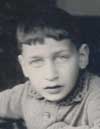

Martin Loewenberg (1928-
Born in Schenklengsfeld in 1928 to Sally and Klara Löwenberg, Martin Loewenberg has been living in Southfield, Michigan (near Detroit) in the USA since 1946. Together with his parents and three of his six siblings, thirteen-year-old Martin was deported to Riga from Fulda (via Kassel) in December 1941. While his twin brothers Fritz and Kurt as well as his parents were murdered in Auschwitz, Martin and his sister Eva survived several concentration and labor camps until the International Red Cross managed to bring them to Sweden in March 1945. At the entrance to the former mikvah in Rotenburg (now a small Jewish museum, serving as a place for commemoration and encounters), there is now a mezuzah created by Martin Lowenberg, and his tefillin [phylacteries] are displayed in the permanent exhibition there. In 2005, 2007, and 2009, in cooperation with the Hessische Landeszentrale fuer politische Bildung (State of Hesse Institute for Political Education), Martin Lowenberg has given countless public lectures about his experiences in Nazi Germany, including the time he spent in a series of concentration camps.
The biography of Martin Lowenberg’s elder brother Hans can also be found on our website Hassia-Judaica.
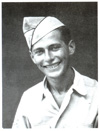
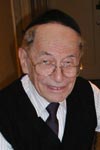
Isfried Neuhaus (1925-
Isfried Neuhaus titled his 1997 memoir, A Collection of Thoughts and Memories, and it has served us as an essential source for the longer summary of his life. The eight-year-old Isfried Neuhas arrived in the USA in the summer of 1933, together with his parents, David Neuhaus and Frieda, née Katz. In 1934 his maternal grandparents, Baruch Katz and Sara née Nussbaum, also arrived. This was made possible for the Baumbach family because they could find refuge in East Amwell, New Jersey with close relatives (several siblings of the grandmother from Heinebach), whose ancestors had emigrated already in the 19th century. In 1935 the family moved to the borough of the Bronx in New York City, where Isfried's father had found work. From 1943 to 1945 Isfried Neuhaus served in the US Army, and was deployed to the South Pacific. After studying business administration, he worked as a Certified Public Accountant in New York until his retirement in 1995. He now lives with his wife Margot in the Washington Heights neighborhood on the northern end of Manhattan, a neighborhood where so many German Jews settled in the 1930s that it came to be known (unofficially) as "Frankfurt-on-the-Hudson."
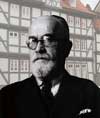
Rabbi Leopold Neuhaus, Ph. D. (1879-1954)
Rabbi Leopold Neuhaus, Ph.D., was born in Rotenburg where he also spent his youth. He became a teacher at the renowned Jewish school in Frankfurt called the Philanthropin. He was the last rabbi of the Frankfurt Jewish congregation until his deportation to Theresienstadt/Terezin in 1942 where, together with Rabbi Leo Baeck, he managed to survive the Holocaust. After the war he became the first rabbi of the new congregation in Frankfurt and also Chief Rabbi for the state of Hesse. From 1946 until his death in 1954 he worked as rabbi for the Gemiluth Chassodim congregation in Detroit, Michigan (USA). He was married to Cilly Carlebach (1884-1968) from the renowned Carlebach rabbinical lineage; they had one son, Ralph Neuhaus (1909-1990), who also became a rabbi. Ralph Neuhaus was associated with Congregation Ohav Sholaum in Washington Heights in northern Manhattan for 47 years.

Jakob Nussbaum (1873-1936)
Jakob Nussbaum was born in 1873 in Rhina, a village in the eastern part of Hesse that had a Jewish majority in the second half of the 19th century. Nussbaum made a substantial contribution to helping the impressionistic style of painting gain acceptance in Germany. He was one of the leading impressionist painters, but his work also reflected other artistic currents of the times. He cooperated closely with Max Liebermann (1847-1935), the distinguished German-Jewish art collector, printmaker, and impressionist painter. For a period of ten years Nussbaum was president of the Frankfurt Society of Artists before escaping to British Palestine in 1933. There he settled in Tiberias on the Sea of Galilee, but was to live there only three more years before his death in 1936. A monograph by Claudia Mueller, on which much of the longer biography here is based, gives detailed information about his oeuvre.

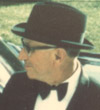
Leo Oppenheim (1903-1980)
Leo Oppenheim was a student at the Hersfeld Gymnasium [academic high school] from 1913 to 1919. Starting in the mid-1920s, he lived with his mother in Bebra at 21 Pfarrstrasse, where they both ran a business in manufactured products. Leo's father Simon Oppenheim had already died in 1907 in Hersfeld, at the young age of 34. On November 12, 1938 (three days after Reichspogromnacht) Leo Oppenheimer was deported to the Buchenwald concentration camp near Weimar, from which he was released only on April 12, 1939. He fled to England that same year, but had to spend the second part of 1940 in an English internment camp as an "enemy alien," before being deported to Australia. His wife Marie, née Ochs, from Eisenach, was one of the Jews deported to the extermination camp Sobibor on May 30, 1942. Leo's mother, Johanna, née Abraham, was deported to the Theresienstadt ghetto, and from there to the extermination camp Treblinka. In 1948 in Melbourne, Leo Oppenheim married Ilse de Jong, who came from Ahaus near Muenster. They made their living together by distributing women's and children's underwear to markets in the area around Melbourne.
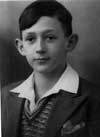
Manfred Oppenheim > Moshe Naveh (1924-
Manfred Oppenheim was born in Rotenburg in 1923. and grew up in nearby Bad Hersfeld where his parents ran a kosher butcher shop. In 1936 the family fled to Palestine, where Manfred changed his name to Moshe Naveh. In his new home country he became one of the leading specialists in developing new water sources. As co-author of history textbooks, his son Eyal Naveh has become known as one of Israel’s “new historians,” who hope to contribute to the mitigation of the Israeli-Palestinian conflict by making each side more aware of the other’s point of view (“Learning Each Other’s Historical Narrative”).
The longer biography is in preparation.
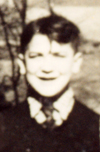
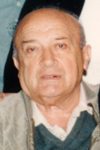
Manfred Moshe Oppenheim (1924-
Manfred Oppenheim is the son of the hide/fur trader Samuel Oppenheim of Niederaula, where Manfred experienced a hostile environment as a schoolchild in the 1930s. In addition, the riots against the Jewish population in November 1938, in which his grandfather and his sister Ruth were severely abused, always remained in his mind's eye. As a twelve-year-old child, he managed to reach British Palestine in December 1939 on the last Kindertransport (the major way that Jewish children were rescued from Nazi Germany). However, his parents and both his sisters, Ruth and Grete, fell victims to the Shoah; they were murdered in the extermination camp of Sobibor in the Lublin dictrict of eastern Poland. Manfred Oppenheim, who took the Hebrew name Moshe, now lives in Tel Aviv. [Heidi Roessing of Niederaula made the material in the preceding description available, based on reports from Manfred Oppenheim himself.]
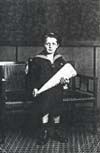
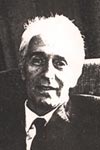
Prof. Dr. Siegfried Oppenheim > Daniel Penham (1914-1999)
Siegfried Oppenheim's family home stood at 1 Reichsstrasse in Bad Hersfeld. In March 1933, at the age of 19, Siegfried passed his final examinations at the Hersfeld Gymnasium (the academic high school that was also known as the Old Monastery School). Just a few months later, he fled from the National Socialist regime to Besançon, France; then, after German troops came to occupy France, he saved himself by fleeing to the USA in 1941. After changing his name to Daniel Penham, he returned to Germany in 1945 as an American soldier and an intelligence officer. To his great disappointment, he had only very limited success in his efforts to organize the rebuilding of the University of Heidelberg without people who had been active in the Third Reich. Nevertheless, he was able to contribute to the removal from their teaching positions of some professors who had collaborated too closely with the Nazi regime. However, he soon found himself confronted by a whole phalanx of German high school teachers, who wanted to portray themselves as victims of the fallen regime and in no way as beneficiaries thereof, much less as having been its supporters or actual perpetrators.
In 1964 he became a Professor of French and Romance Philology at Columbia University in New York. As a scholar, Penham made his name through his studies of the Renaissance philosopher Budé or Budaeus, whose monumental work De transitu Hellenismi ad Christianismum [On the Transition from Hellenism to Christianity] he translated first into English and then also into French; he also compiled a critical edition of the work.

Walter Oppenheim > Zev Katelev (1915- )
Walter Oppenheim was born in Wehrda, the son of Siegfried Oppenheim (himself born in Nentershausen in Rotenburg county), who taught in the Jewish school of Wehrda. After that school was closed, he moved the family to Rhina in 1919. On June 23, 1934 over a dozen Nazi stormtroopers raided the Oppenheims' apartment in Rhina and robbed Siegfried of the documents he had compiled about the history of the Jews in that region. In the autumn of 1933 he went to Franfurt to qualify as a mechanic. On account of this training he was permitted to settle in British Palestine two years later. In 1945, after the war had ended, Walter Oppenheim returned to Rhina as a soldier in the U.S. Army. After becoming an Israeli citizen in 1938, Walter adopted the Hebrew name of Zev Kateley. In the 1980s he supported Renate and Peter Chotjewitz in their attempt to reconstruct the history of Jews in Rhina. In our account Walter Oppenheim/Zev Katelev is presented as an important source for the fictitious " Diary of the Jewish Oak".
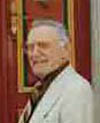
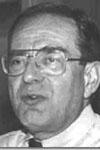
Heinz Harry Rothschild (1921-2004)
At the end of the 19th century, the Rothschild family moved from Weiterode (now a district within the town of Bebra) to what was then the county seat of Rotenburg on the Fulda, where Joseph Rothschild and his son Isaak (the grandfather of Heinz Harry) established a dye shop at 9 Marktplatz. In 1920 Albert Rothschild, Heinz Harry's father, married the Swiss-Jewish woman Irma Dreifuss, whom he had come to know during his time as a prisoner of war. Of Albert's eight siblings, four met a violent death: his two brothers Hermann and Joseph died at the front in World War I, and his two sisters Recha and Selma met their deaths as victims of the Shoah. In June 1938 Albert and Irma Rothschild, together with their children Heinz Harry and Thea, managed to escape to the USA, where Heinz made his living as a sales representative. In this occupation, the fact that he had received commercial training in Frankfurt from 1935 to 1938 stood him in good stead. After 1945, Heinz Harry Rothschild returned to his hometown of Rotenburg three times, the last of which was in June 1996, when he came with his daughter Karen. On that occasion detailed conversations were held with him, which have formed the basis for the longer biography here. From 1955 on, his nephew Joseph Rothschild (born in 1930) taught at the renowned Columbia University in New York as a professor of political science and East European history; he also was part of the foreign policy advisory circle of US President Jimmy Carter in the 1980s.
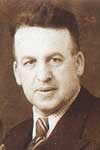
Jakob Rothschild (1898-1991)
He was born and grew up in Oberaula. In May 1928 he opened a store in Bad Hersfeld selling manufactured goods and linen. In the same year he married Johanna (Hanna) Linz from Rotenburg. In 1937 the Rothschilds were able to establish a new home in Chicago, Illinois, USA. Jakob Rothschild’s niece Marga Spiegel, daughter of his brother Siegmund, survived the Nazi period by hiding with farmers in the Muenster area in Westphalia. Marga Spiegel’s life and survival in Nazi Germany have been portrayed in the feature film “Unter Bauern” (Amongst Famers) which was released in September 2009. In memory of Jakob’s brother Siegmund Rothschild and his wife Cilly, two so-called “Stolpersteine” ("stumble stones," which are bronze memorial plaques installed in the sidewalk in front of the place where Nazi victims once lived) were installed in Oberaula in November 2007.
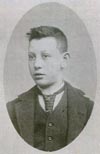
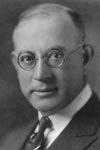
Moritz/ Morris Milton Rothschild (1873-1943)
Although eleven-year-old Moritz Rothschild emigrated to America with his mother and his siblings in 1884, he nevertheless remained faithfully linked to his hometown of Rotenburg on the Fulda. In America he took the first name of Morris. After studying law and business administration, he pursued a career in the printing trade. He became head of a large printing establishment in Chicago as well as a paper factory and a knitting plant. He recorded his managerial administration expertise in a sort of guidebook called Bank Advertising, published in 1912. This successful businessman and entrepreneur was not lacking in honorary positions. He was appointed director of his Jewish congregation in Chicago, and director of various Jewish charitable institutions in Chicago. The renowned Idlewild Country Club chose him as its president. During the times of adversity in Germany that marked the 1920s, Morris Rothschild served in many different ways as the benefactor for needy people and social services in his hometown of Rotenburg. He donated money for the local Ambulance Service and for a playground with a wading pool in the Saint George Kindergarten, whose visitors from that time remember him as the "Donation Uncle from America." In 2010, the connecting pathway between Heinz-Meise Street and the lower entrance to the Jewish cemetery in Rotenburg was named in honor of Moritz Rothschild – with an explanatory panel that states, "Benefactor for his hometown." Morris Rothschild's family tree can be traced back for multiple generations. His great-grandfather David Marcus was named as a Schutzjude {"protected Jew"] in Rotenburg on January 18, 1792. [The term Schutzjude or "protected Jew" refers to a protected status - originating centuries earlier - which only a few Jews in a particular place could buy from the local ruling authority, usually for a high fee, and which would allow them residence and economic possibilities. He adopted the family name Rothschild in 1808 for himself and his nine-member family.
Additional biographical material is in preparation
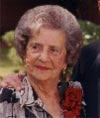
Bertha Beryl Sommer-Simon (1917-
Bertha (called Bertel) was the only person from her Richelsdorf family to have escaped the Holocaust, thanks to the marriage ceremony in Durban, South Africa in February 1939 in which she wed Arthur Simon, who had fled there in 1938 and whom she had first met in 1932 when visiting relatives in Langenselbold. The Sommer family had left their hometown of Richelsdorf in 1934 for the anonymity of the big city of Frankfurt am Main, in order to live in what they hoped would be a less hostile environment. Tragically, all of Bertha's attempts to bring to South Africa those relatives who had stayed behind in Germany fell victim to the "bureaucratic" obstacles imposed by the Nazi regime on Jews desperate to escape.The longer biography is in preparation.

Julie Sommer (1886-1942)
Julie Sommer was the mother of Ruth Holländer, Roger Herz-Fischler’s mother. She was born in Heinebach in 1886, as daughter of Sarah Katzenstein of Frankenberg and Koppel Sommer of Heinebach. In 1914 she married Joseph Holländer of Hilchenbach (near Siegen). Both Julie Sommer and Joseph Holländer were deported to Zamość, Poland in 1942, and there murdered. In 1937 their daughter Ruth was able to emigrate to the U.S. where she married Sigmund Fischler from Leipzig. In 1940 their son Roger was born in Washington Heights (located in the upper part of Manhattan), the home to twenty-five thousand German-Jewish refugees. What follows is divided into two parts. The first part contains material, in a very abbreviated form, from the chapters, “The Hilchenbach Group”, “Common Ancestors” and “Selma Holländer and Freddy Furcht” of Roger Herz-Fischler’s book A Triple Love Story / The Ancestors of Eliane Herz and Roger Fischler. The entire book, divided into chapters for convenience, can be found at either of the following two sites:
https://people.math.carleton.ca/~rhfischl/GENEALOGY/GENEALOGY.html
http://web.ncf.ca/en493
The second part is a copy of the chapter (with the page numbering, etc. unchanged) “The Heinebach Group” from the book A Triple Love Story. The genealogical tree on the first page above shows the maternal ancestors of Julie Sommer through the great-grandparents. The tree on the first page of the second part shows the paternal ancestors of Julie Sommer through the great-grandparents.
Since their retirement Eliane and Roger Herz-Fischler have written three books related to the history of their families.
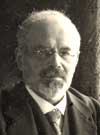
Dr. Siegfried Sommer (1859-1925)
Siegfried Sommer was born and grew up in Rotenburg. At the Friedrichsgymnasium [academic high school] in Kassel he was a classmate and close friend of Prince Wilhelm, who would later become the German Emperor William II (Wilhelm II). Many of Siegfried’s letters have been preserved, which testify to his great enthusiasm about his friendship with his Royal Highness. In his later years as a high-ranking judge, Siegfried Sommer was one of the most successful Jewish lawyers in government service in Germany. Just a few weeks before his death in 1925 he became president of the "Senate," a section of the Frankfurt appellate court.
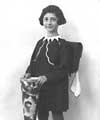
Ilse Speier/ Yehudith Epstein (1932-
Ilse Speier was born and grew up in Rotenburg on the Fulda, to a family that had lived in Rotenburg for generations. In 1927 her father started a retail business at 16 Breitenstrasse with a wide range of goods for sale. The premises had been the address of her great-uncle Moses Gans, who had been awarded the honorary title of "Royal Court Master Locksmith” (“Landgräflicher Hofschlossermeister”). Ilse’s father Adolph Speier was dedicated to the Rotenburg Fire Brigade as well as to the local Red Cross. In March 1940, Ilse was able to escape Nazi Germany on a “Kindertransport”, i. e. a special transport of Jewish children, which brought her to Jerusalem. After getting married, she took the name Yehudith Epstein. Together with her husband Haim Epstein, she has been living for decades in Kibbutz Sa'ad, close to the border of the Gaza strip.
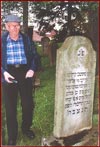
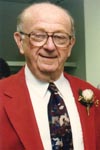
Siegfried Fred Speier (1916-1996)
Siegfried (Fred) Speier was born on March 19, 1916 in Niederaula, where he had a happy childhood. Until 1938, his father, Sally Speier, ran a retail store on Ziegenhainer Street in Niederaula, where he sold manufactured and household goods, including china. In the longer biography [that follows] his memories of life in village society are discussed as well as his bitter and humiliating experiences of the discrimination and persecution under the Nazi regime. In January 1935, at the age of 18, Siegfried managed to reach Louisville, Kentucky, in the USA, where he established a store selling hardware and electric appliances. This undoubtedly helped to save his parents' lives, for they were able to leave Nazi Germany for Louisville in December 1938. Known in America as Fred Speier, he returned to his childhood home for the first time in 1958, and visited five more times thereafter. For his last visit in June 1994, he came for a memorial ceremony at the Jewish cemetery in Niederaula and for the installation of a memorial plaque. The longer biography also reports on the visit of the former pastor of Niederaula, Karl-Werner Brauer, to Kentucky in June 1990, when he was made an honorary citizen of Louisville for his commemorative activities.

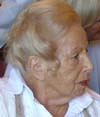
Marga Rothschild Spiegel (1912-
Margaret Spiegel was born on June 21, 1912 in Oberaula in the Kassel district, where she grew up as the daughter of Siegmund Rothschild and his wife Cilly, née Rosenstock, from Eiterfeld in the Fulda district. For three centuries her family had been deeply rooted in the small town of Oberaula. Upon her marriage in January 1937 to the horse trader Siegmund Menne Spiegel, Marga moved to Ahlen near Muenster in Westphalia. From February 1943 till the end of World War II, Marga together with her husband and her daughter Karin survived by going into hiding among farming families in Westphalia. Her years in disguise and hiding have been turned into a German-French feature film entitled “Unter Bauern” (Among Famers) which was released in September 2009, starring Veronica Ferres as Marga Spiegel, Armin Rohde as Siegmund Spiegel, and Luisa Mix as her daughter Karin. In memory of Marga’s parents, two so-called “Stolpersteine” ("stumble stones," which are bronze memorial plaques installed in the sidewalk in front of the place where Nazi victims once lived) were installed in November 2007 in front of their former house in Oberaula. Marga is the aunt of Paul Spiegel (1937-2006) of blessed memory, who served as president of the Central Council of Jews in Germany. In the longer biography that follows, Barbara Greve integrates the biography of Marga Rothschild Spiegel with some general aspects of the history of Jews in Oberaula.
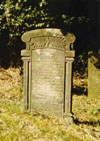
Samuel Spiro (1885-1960)
He was born in Schenklengsfeld, Hersfeld County, in 1885. In our project we present his memories of his youth in the state of Hesse which he wrote in 1948 as “Jugenderinnerungen aus hessischen Judengemeinden” (Youth Memories from Hessian Jewish Communities) which were published in the book “Buerger auf Widerruf: Lebenszeugnisse deutscher Juden 1780-1945” (Citizens Subject to Recall: Memoirs of German Jews 1780-1945), edited by Monika Richarz 1976ff.
Samuel Spiro’s account includes the activities of his grandfather Herz Spiro as Jewish teacher in Schenklengsfeld; the photo on the left shows Herz Spiro's tombstone in the Schenklengsfeld Jewish cemetery. In addition, he describes his father Jakob Spiro's role as Jewish teacher in both Schenklengsfeld and Fulda. Although Jakob Spiro had forced young Samuel to attend the strictly orthodox Breuer yeshiva in Frankfurt, Samuel soon dropped out in order to take up the study of medicine. He escaped to British Palestine where he worked in a hospital.
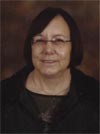


Ellen Stepak (1947 -
Ellen Stepak nee Goldenberg grew up in Huntington, Indiana, USA. After graduating from the University of Wisconsin/Madison, she made aliyah to Israel in September 1969. Since 1995 Ellen has been engaged in research of her ancestors from Pinsk, Belarus; Rotenburg an der Fulda, Germany (and in the US from 1854); Belozerka, Ukraine; Kupiskis and Vabalninkas, Lithuania and Lodz, Poland. Among her family surnames are Brenn, Posenitzky, Werthan, Gotthelf, Krukstein, Klots and Kling. She has translated material for the Internet, is writing family books, has helped document old Jewish cemeteries in Europe, and has written articles on genealogical topics. She is an active member of the Israel Genealogical Society. She is the wife of Zvi, mother of three and grandmother of two. In this book, which is here presented as a PDF, Ellen relates the story of her genealogical journey to discovering and researching her roots in the region of Hesse, Germany. It is a very different story from that of her other ancestors. Here the family resided in one place, even in one house, for generations, and she was able to visit inside the half-timbered family home, dating from before the 19th Century.
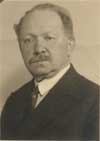
Benjamin Stiefel (1872 -1945)
Born in the Meissner town of Abterode, Benjamin Stiefel was the last Jewish teacher in the village of Baumbach (now part of the township of Alheim). Before teaching in Baumbach, he had been the teacher in the Jewish school in Werther in Westphalia. Benjamin’s sons Bruno (born 1907) and Herbert (born 1915) were able to escape to the USA in 1935. His son Joseph (born 1910) was one of the German Jews who had escaped to Denmark and whose lives were later saved from Nazi roundups in a heroic and daring rescue in the fall of 1943, involving many Danish citizens and Danish fishermen who smuggled the Jews out in fishing boats across the Oresund (a narrow Danish strait) to safety in Sweden. In New York, Herbert made a name for himself by specializing in zippers, thus becoming the subject of a story (“Zipperman Herbert Stiefel”) by Mark Singer in the famous magazine The New Yorker in 1987.
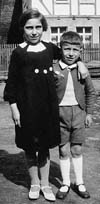
Marga Strauss (1928-1943)&Manfred Strauss(1931-1943)
Elisabeth Sternberg-Siebert’s account “Tracing Jewish Life in Burghaun: A Work of Remembrance” presents a survey of local Jewish history and tradition, in which we meet with several generations of the Strauss family.
In addition to the German version, an English version has also been posted on our website. (Translation by Rev. Martin Siebert).

Joseph Strauss(1895-1965)
The Strauss family of merchants serves as a typical example of the destinies of the Jews of Huenfeld. The Strauss family originally came from nearby Rothenkirchen. In their house in Fuldaer Strasse the family ran a thriving grocery. In Elisabeth Sternberg-Siebert’s portrayal (which follows), Joseph Strauss’ son Alfred, who survived the Holocaust by going into hiding in Holland, gives a detailed report about his life during the years of persecution. In addition, Joseph’s wife Lilli, née Wertheim (from Naumburg near Kassel), presents the shocking account of her deportation to Riga in December 1941.
A longer version of this capsule biography is also available in English (translation by Rev. Martin Siebert).
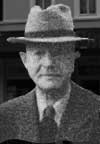 © Otto Abbes
© Otto AbbesKarl Tannenbaum(1878-1950)
Karl Tannenbaum was born and grew up in the east-Hessian village of Mansbach. In 1899, at the age of 21, he moved to Bad Hersfeld together with his brothers Isaak and Moses, where he and Isaak opened a shop for manufactured goods and textiles at 13 Breitenstrasse. Together with his wife Amalie (Malchen), née Schloss (from Gleicherwiesen in Thuringia), his daughters Rosi and Luise, his son-in-law Leopold Klein and two grandchildren, he boarded the ill-fated SS St. Louis on May 13, 1939 in order to escape Nazi Germany. However, their voyage did not take them to freedom in Cuba but instead led first to the transit camp Westerbork in Holland, and then to the Theresienstadt concentration camp in Bohemia, Czechoslovakia. He and his wife, his daughter Rosi, and his granddaughters Ruth and Hannelore survived the war, but his daughter Luise and her husband Leopold Klein were murdered in the gas chambers of Auschwitz in 1944.


Moshe (Morris) Werthan (1937-
Morris Werthan was born in Nashville, Tennessee, USA where he spent the first five decades of his life. In the 1990s he made aliyah (immigrated) to Israel, and he and his wife Libby have been living in Jerusalem for almost twenty years. For a long while he knew only that his ancestor Meier Werthan had one day come from Germany and laid the foundations for an important production center for packing material in Nashville, which later became the setting for some of the scenes of the feature film Driving Miss Daisy. In 2007 David Blumenfeld and Moshe's wife Libby produced a 27-minute documentary film called Crossing the Narrow Bridge, which traces Moshe Werthan's search for his roots to Rotenburg on the Fulda in Germany, the site from which his ancestor emigrated in 1865. The film was chosen for the Nashville Jewish Film Festival in November 2007 and was also shown on Nashville public television.

Hugo Wertheim (1854-1919)
Hugo Wertheim was born and grew up in Lispenhausen (now part of Rotenburg). He emigrated in 1875 to Melbourne, Australia where he first worked as a wholesaler for sewing machines from the Frankfurt firm of his uncle Joseph Wertheim (see the biography of Joseph Wertheim below). In 1908 he founded the Wertheim piano factory in Richmond, Melbourne, which produced 20,000 pianos in the following decades.
The longer biography is in preparation.


Joseph Wertheim (1834-1899)
Joseph Wertheim was born in the house at 4 Scheunengasse in Rotenburg on the Fulda, the son of the linen and thread merchant Leiser Wertheim and his wife Rosalie, née Ballin, whose family also came from Rotenburg. In 1868 he founded a sewing machine factory with an iron foundry of its own. In 1873 this enterprise was incorporated as the Deutsche Nähmaschinen-Fabrik von Jos. Wertheim, or the Jos. Wertheim German Sewing Factory. In 1883 its annual output amounted to 35,000 sewing machines produced by its 600 employees. Joseph Wertheim had trained as a specialized mechanic in an apprenticeship in the Breithaupt precision engineering firm (Mechanisch-mathematisches Insthitut Breithaupt) in Kassel, and he had acquired the know-how for setting up a sewing machine factory while working in the firm of Wheeler & Wilson in New York in the 1860s. In 1932 his descendants transferred the Wertheim manufacturing plant to Barcelona, Spain, where it was integrated into the Rapida S.A. company which Carlos Vallin (aka Karl Wertheim) was in charge of. In 1943 this company was taken over by the Olivetti Group. It had meanwhile concentrated on the production of high-quality technological products in the field of electronic data processing, logistics, and household appliances, and has become one of the leading Spanish companies in these lines of business.
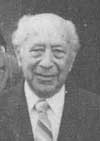
Julius Wetterhahn (1901-1991)
Julius Wetterhahn was born in Bad Hersfeld in 1901, and attended the local Gymnasium (academic high school), where he passed his Abitur (university-qualifying) examinations in 1920. He then studied chemistry at the University of Frankfurt, which granted him his doctorate in 1929. In August 1938 he left Nazi Germany for the United States, where he found employment with the cosmetics firm of Helena Rubinstein, whose chief chemist he eventually became. His father Max Wetterhahn (born September 10, 1870) was the first Jewish child to be born in Hersfeld after previous restrictions on Jewish settlement were removed there in 1867.


